Rock Climbing Injury Tips: Upper Body Stretching
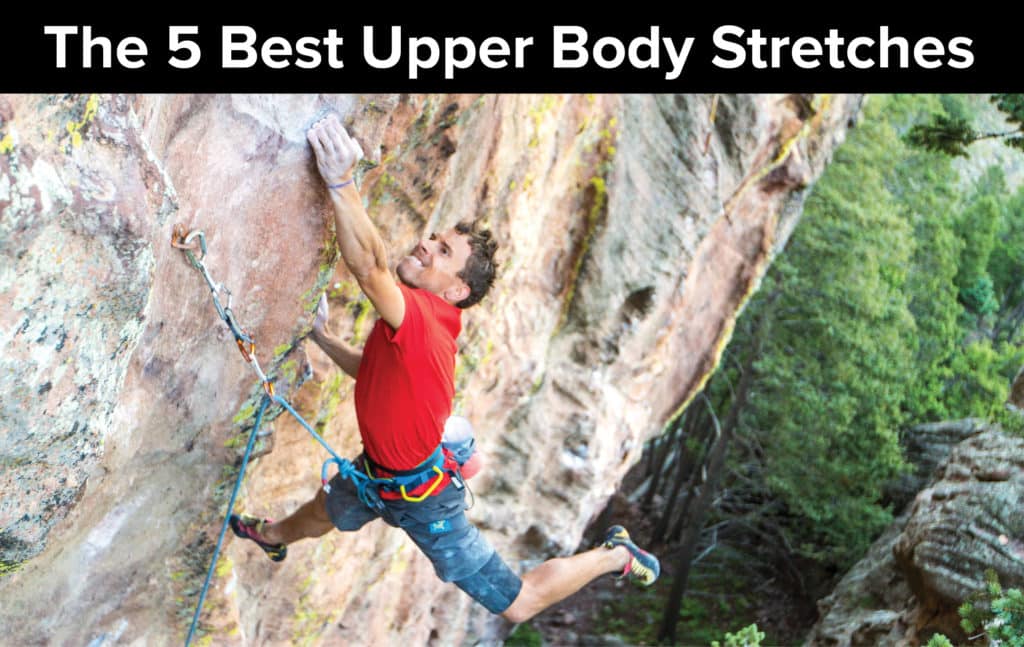
Photo Credit: Cameron Maier
Professional Climber Jonathan Siegrist shows you the five best stretches to prevent climbing injury. It is important to stretch the stiff muscles in your body to increase flexibility and prevent injury.
The Importance of Daily Prevention
You may feel that injuries aren’t going to happen to you. But once they occur, prevention effort is too little too late. It is much smarter to prevent injuries than deal with the consequences. Preventing climbing injuries is not hard to do. It just takes an awareness of your movements and less than 20 minutes a day of supplemental exercises.
Injury-prevention exercises should develop into a habit just like brushing your teeth. Imagine how your breath would smell and how rotten your teeth would be if you only ate food but never brushed your teeth. The same goes for corrective exercises. If you only climb and don’t perform corrective exercises to balance your body, you will start to break down and can get injured. A daily prevention program goes a long way and can keep you out of serious trouble.
Exercise Selection
The stretching exercises target the pectoralis and latissimus dorsi muscles. These are muscles that, when stiff, can lead to a hunched climber body with shoulder blades that round forward and arms that rotate inward.
Why Stretch?
It is important to stretch the stiff muscles in your body to increase flexibility and prevent injury. Stretching before climbing should always be dynamic. However, stretching any other time can be a combination of both static and dynamic. The stretching program below can be performed up to three times each day. It is recommended to use a six-inch diameter foam roll, however there are several other alternatives that you can use. Many climbers perform the following stretches incorrectly by flaring out their rib cage and arching their low back. Make sure to keep your ribcage down and back flat as shown in the photos. This can be accomplished by activating your abdominal muscles during the stretches. If it is a challenge to keep your abdominals engaged while stretching, exhale each time you lift your arms overhead. This will naturally bring your ribs downwards and improve the form of the stretch. Stretch before performing your antagonist-muscle exercises. This will increase your available range of motion so that you can take advantage of your improved flexibility when performing the antagonist exercises.
The stretching program below can be performed up to three times each day. Perform exercises for 30 seconds to 1 minute each. Make sure to keep your stomach engaged and your ribcage down when performing the stretches.
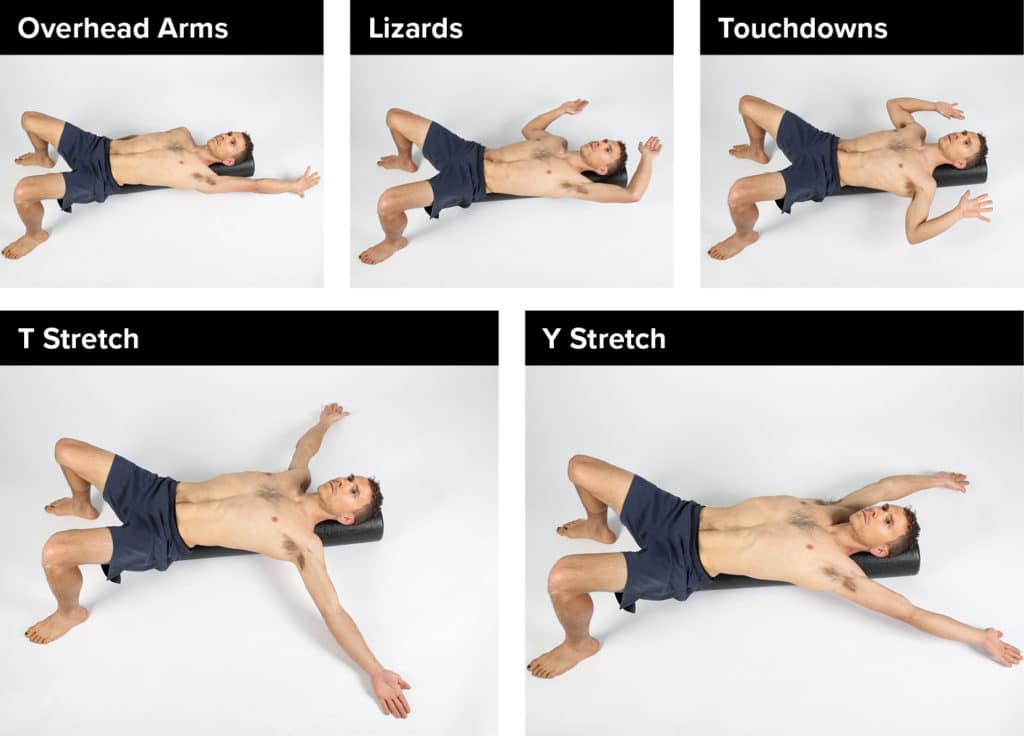
It is recommended to use a six inch diameter foam roll, however there are several other alternatives that you can use. In the photo below you can use a foam roll, a retired rope or a rolled bath towel.
Alternating Arms
Alternate raising each arm above your head as your opposite arm reaches down by your side. Engage your core and exhale while reaching. Make sure your thumb is directed towards the floor when reaching overhead.
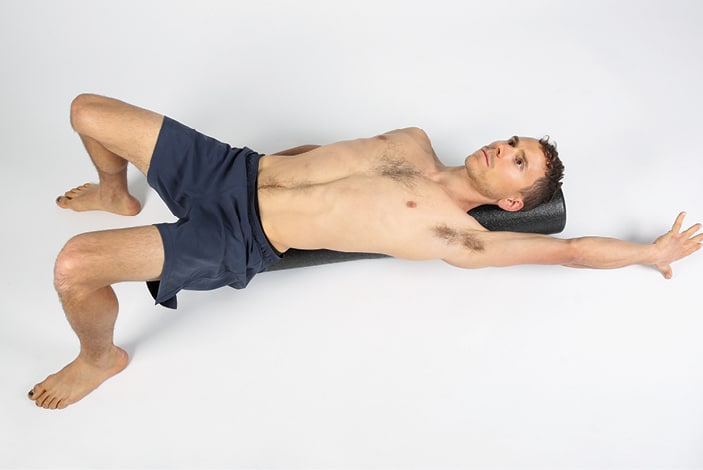
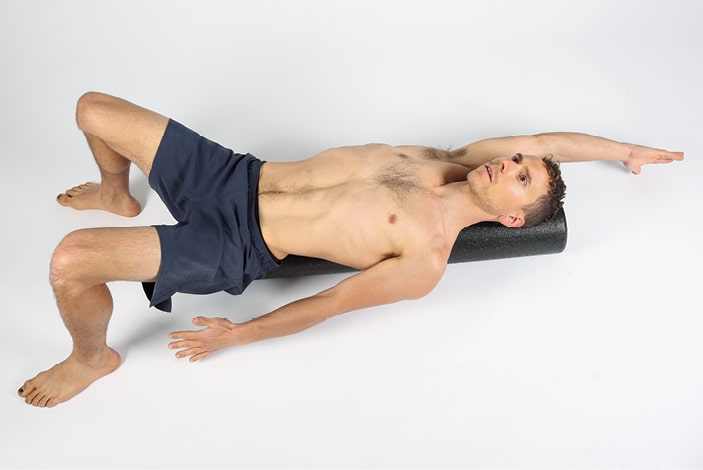
Lizards
Begin with both elbows bent to 90 degrees and at shoulder height. Alternate moving each arm overhead towards your ear as the other arm moves toward your torso. Maintain your elbow bend at 90 degrees throughout the exercise.
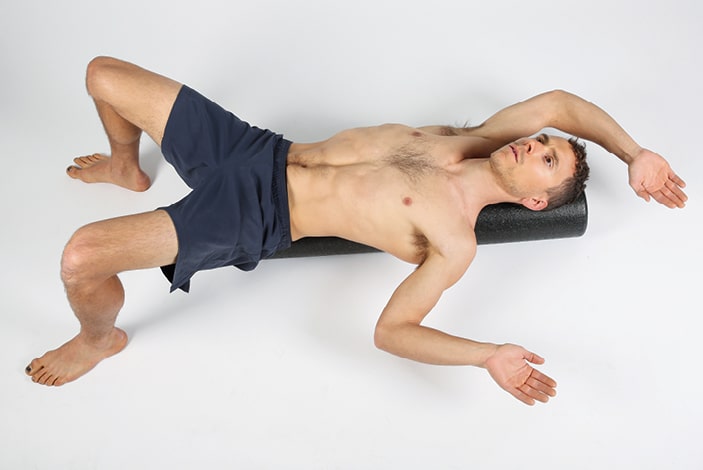
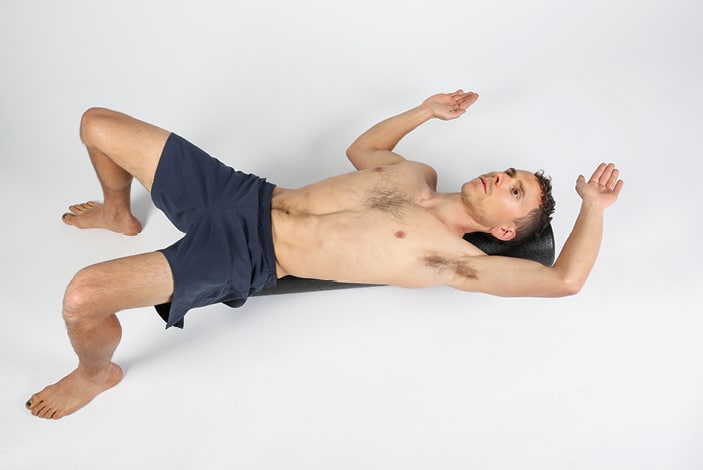
Touchdowns
Begin with both elbows bent to 90 degrees and at shoulder height. Move both arms overhead while straightening your elbows.
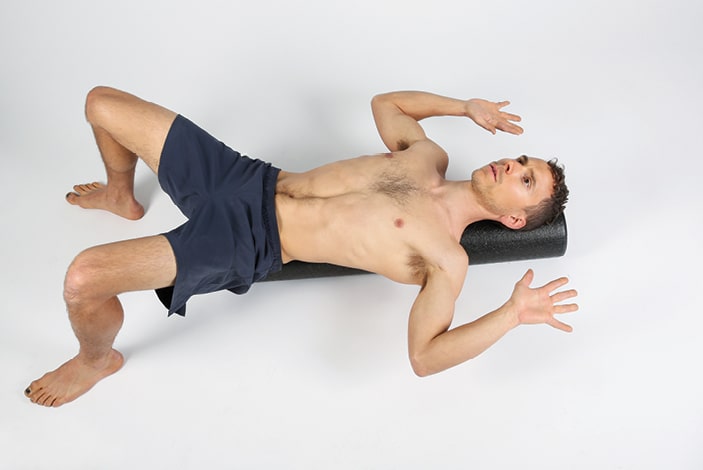
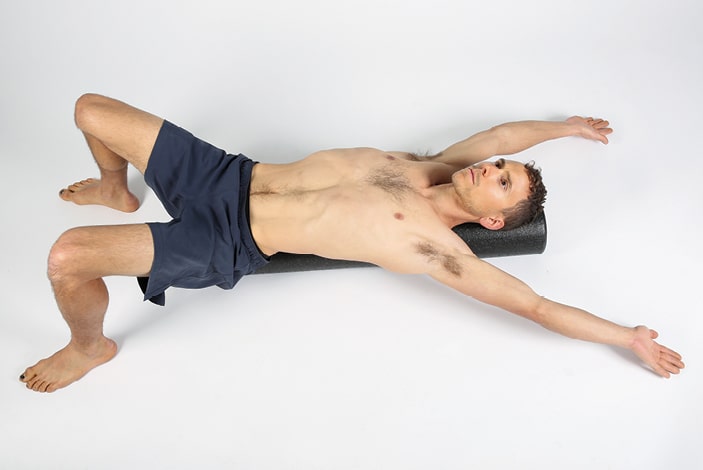
T Stretch
Relax both arms out to your side to form the letter T.
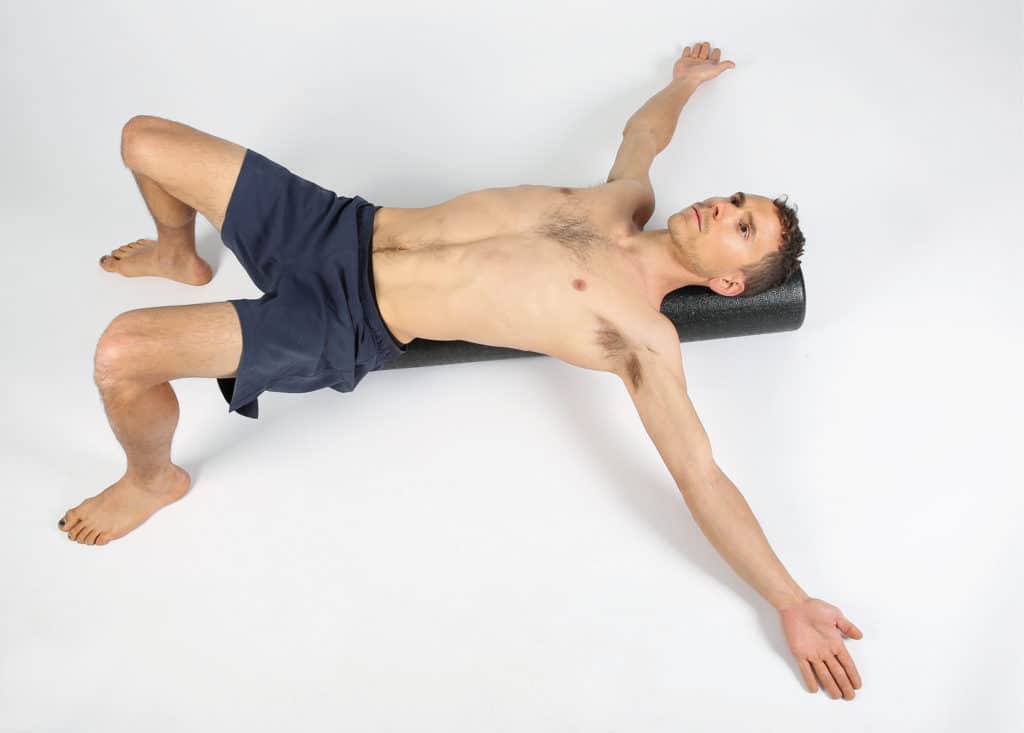
Y Stretch
Relax both arms above your head to form the letter Y.
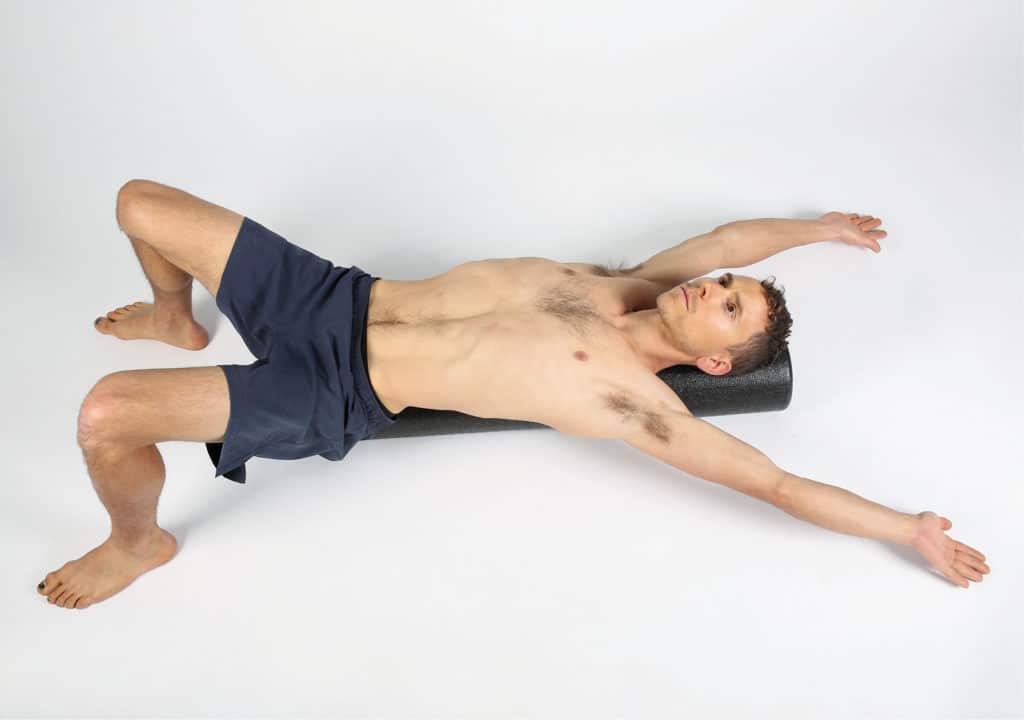
- Disclaimer – The content here is designed for information & education purposes only and the content is not intended for medical advice.

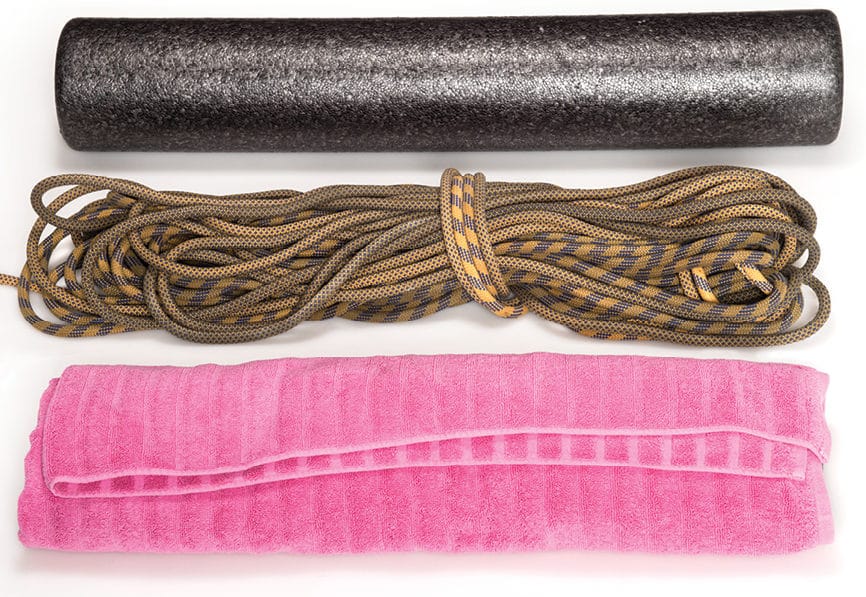




If I have a shorter foam roller, where is the best place to position it? Or is it better to find something that will support from my head down to my hips?
What does the addition of the foam roller do for these exercises?
Performing the exercises on the floor without a foam roller would be okay, but using the foam roller parallel to the spine would be optimal. If you do not have a six inch diameter foam roll you can use a retired rope or a rolled bath towel. Placing the foam roller, rope or towel along the spine creates a fulcrum to open up your front body, increases the distance from the floor to increase the stretch, presses on your thoracic spine to improve thoracic extension which is required for shoulder mobility, and increases the proprioception need from the body to stabilize your position. If you have a shorter foam roller, you can place it parallel along the mid-spine and bridge your hips into the air while performing the exercise. This will just require move trunk control and neck strength while performing the exercises.
Love these stretches, I find that a lot of the stretches that are good for my climbers are also great for me as the massage therapist! Similar postures are prone for both of us